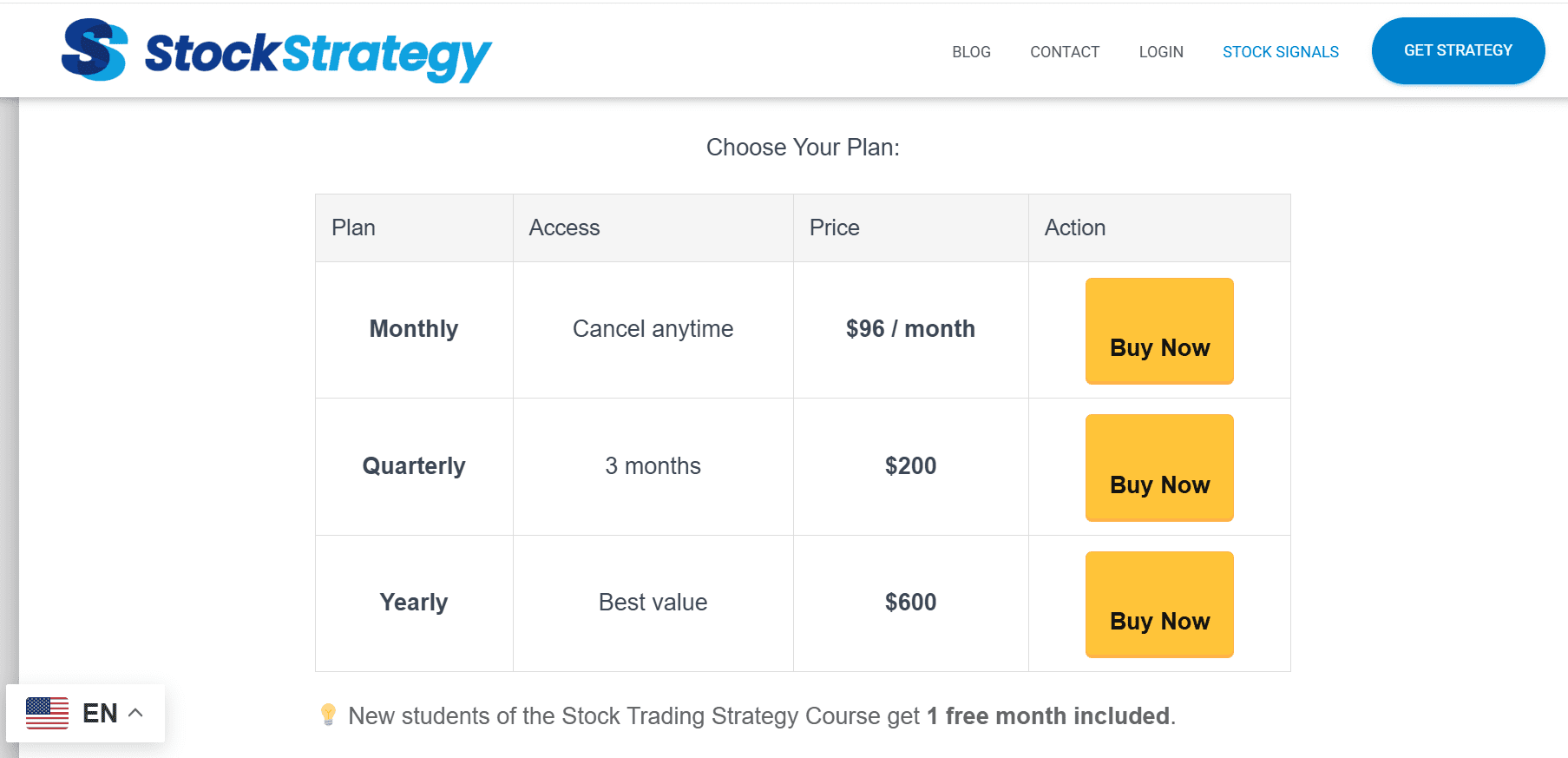In the fast-paced world of financial markets, timing and information are everything. Investors, both new and experienced, are constantly seeking ways to make smarter trading decisions, minimize risks, and maximize profits. One of the most effective modern tools that can help you do this is the use of stock signals — automated or human-generated insights that guide when to buy or sell a stock.
This comprehensive guide will walk you through what stock signals are, how they work, the different types available, their benefits and limitations, and the best ways to use them strategically to boost your investment results.
What Are Stock Trading Signals?
Stock signals are alerts or recommendations that indicate the best times to buy, sell, or hold a stock. These signals are based on a wide range of market data, including technical indicators, volume analysis, price patterns, and even sentiment analysis.
The main purpose of stock signals is to remove emotional decision-making from trading and replace it with data-driven strategies.
There are two primary sources of stock trading signals:
- Algorithmic (Automated) Signals – Generated by AI-driven systems or trading bots that analyze thousands of data points in real time.
- Human-Generated Signals – Provided by professional analysts or experienced traders who study charts and financial reports manually.
Both can be valuable, but the key is knowing how to interpret and use them effectively.
How Stock Signals Work
The mechanics behind stock signals depend on the trading style and analytical method used. Here’s how the process typically unfolds:
- Market Data Collection
The system or analyst collects data from financial markets, such as price movements, trading volume, news headlines, and global market events. - Analysis Using Indicators
The data is analyzed using technical indicators like moving averages (MA), relative strength index (RSI), MACD, and Bollinger Bands. For fundamental traders, earnings reports, P/E ratios, and economic trends may also be included. - Signal Generation
Once the data meets certain conditions (for example, RSI below 30 might signal a “buy” due to overselling), a stock signal is generated — often in the form of “Buy,” “Sell,” or “Hold.” - Delivery
The signals are then sent to traders through mobile apps, email alerts, or trading dashboards, allowing users to act quickly on opportunities.
Types of Stock Signals
Understanding the various categories of stock trading signals helps traders align their strategy with their goals and risk tolerance.
1. Technical Stock Signals
These are the most common type and rely purely on chart-based analysis. Technical signals are based on price action and statistical indicators such as:
- Moving Average Crossovers
- RSI (Relative Strength Index) Levels
- MACD Divergence
- Support and Resistance Breakouts
2. Fundamental Stock Signals
These signals are generated from a company’s financial performance and macroeconomic factors. They include:
- Earnings per share (EPS) trends
- Dividend announcements
- Revenue growth or debt levels
- Industry or sector news
3. Sentiment-Based Signals
With the rise of social media and news analytics, stock signals can now incorporate market sentiment. AI algorithms scan millions of tweets, headlines, and posts to detect positive or negative sentiment around certain stocks.
4. AI and Machine Learning Signals
These advanced systems use big data and machine learning to predict price movements before they happen. They can detect hidden patterns in market behavior that humans often miss.
5. Custom or Hybrid Signals
Some platforms allow traders to combine technical, fundamental, and sentiment data to create personalized trading signals that fit their unique strategies.
Benefits of Using Stock Signals
The adoption of stock signals is growing rapidly because they provide multiple advantages for both beginners and experts.
1. Data-Driven Decisions
Trading based on signals eliminates emotional bias and ensures every move is supported by concrete data.
2. Time-Saving
Manually analyzing dozens of charts takes time. Stock signals automate this process, allowing you to focus on execution instead of research.
3. Early Market Entry
Signals help traders act quickly when new opportunities arise, giving them an edge over slower manual analysts.
4. Risk Reduction
By relying on signals that include stop-loss levels and price targets, traders can manage risk more effectively.
5. Improved Profit Consistency
Following a proven stock signal strategy helps maintain consistency in profit-taking and loss management over time.
The Role of Technology in Modern Stock Signals
The evolution of fintech has completely transformed how trading signals are generated and used. Artificial Intelligence (AI) and machine learning (ML) are now at the heart of most advanced stock signal systems.
AI Algorithms and Predictive Modeling
AI-powered trading platforms analyze historical market data, identify recurring trends, and make predictions about future price movements. These models continuously learn and adapt, becoming smarter with more data input.
Real-Time Alerts and Automation
Modern trading platforms can send real-time push notifications or even execute trades automatically when a signal triggers. This automation ensures you never miss a profitable opportunity, even if you’re not watching the market.
Cloud-Based and API Integration
Many stock signals providers integrate with brokerage APIs, allowing seamless communication between your trading account and the signal system. This level of integration helps automate the buy/sell process.
How to Evaluate the Reliability of Stock Signals
Not all signals are created equal. Some may work well for short-term trading, while others are designed for long-term investors. Before relying on any signal service, consider these factors:
- Historical Accuracy – Check the signal provider’s success rate over time.
- Transparency – Reputable providers share their trading methodology and performance history.
- Real-Time Testing – Try demo accounts before using real money.
- User Reviews and Reputation – Community feedback often reveals whether signals are reliable or misleading.
- Support and Updates – Reliable services offer continuous market updates and technical support.
Combining Stock Signals with Personal Analysis
While stock signals are powerful tools, you shouldn’t depend on them entirely. They work best when combined with your personal judgment and market understanding.
Here’s how to merge both approaches effectively:
- Validate Every Signal: Double-check major buy or sell recommendations using your own technical or fundamental analysis.
- Set Custom Risk Levels: Use your own stop-loss and take-profit thresholds instead of blindly following automated values.
- Stay Updated on Market News: Signals may miss sudden events like political news or global crises that can drastically move markets.
By balancing automated insights with personal experience, you’ll make more confident and profitable decisions.
The Psychology Behind Stock Trading Signals
One underrated advantage of stock signals is how they impact trader psychology. Many traders lose money not because of bad strategy, but due to emotions like fear, greed, and impatience.
Signals help counter this by:
- Creating structure and discipline in trading.
- Providing logical entry and exit points.
- Reducing stress caused by uncertainty.
Essentially, signals act as a mentor, keeping your focus on long-term consistency instead of short-term excitement.
Common Mistakes Traders Make When Using Stock Signals
Even with reliable signals, traders can still lose money if they misuse the information. Here are the most common errors to avoid:
- Over-Reliance on Automation:
Don’t assume every alert is 100% accurate — always verify with your own research. - Ignoring Risk Management:
Never risk more than 2% of your capital per trade, even when following strong stock signals. - Failing to Backtest:
Always backtest new strategies on historical data before applying them live. - Switching Strategies Too Often:
Consistency is key. Constantly changing signal providers or systems can destroy profitability. - Emotional Trading:
Stick to the data. Avoid acting impulsively based on fear or excitement.
Real-Life Examples of Successful Signal Trading
Many traders have achieved consistent profits by using high-quality stock signals strategically.
For instance, investors who followed momentum-based signals during tech stock rallies (such as Nvidia, Apple, and Microsoft) were able to enter positions early and lock in major gains before price peaks.
Similarly, value investors use fundamental stock signals to identify undervalued companies before big institutional money flows in. By following signals linked to improving earnings, debt reduction, or dividend increases, they capture strong long-term growth opportunities.
How to Get Started with Stock Signals
If you’re new to stock trading or want to improve your strategy, here’s a simple roadmap to begin using stock signals effectively:
- Choose a Reliable Signal Provider
Research trusted providers with a proven track record. Examples include TradingView alerts, MetaTrader indicators, or specialized apps. - Start Small
Begin with a demo account or low capital until you understand how the signals behave in different market conditions. - Diversify Your Sources
Use multiple signal sources (technical + fundamental) to cross-check and confirm opportunities. - Monitor Performance Regularly
Keep a trading journal to track signal accuracy, profitability, and missed opportunities. - Automate Gradually
Once confident, connect your trading platform to automated systems to save time and increase precision.
The Future of Stock Signals
The next generation of stock signals will likely combine blockchain transparency, artificial intelligence, and crowd-sourced market data.
Future systems may allow investors to trace exactly how a signal was created, providing complete visibility into the data sources and algorithms behind it.
Additionally, as quantum computing and predictive analytics evolve, signals could soon identify market shifts with near-perfect precision. Traders who adopt these technologies early will have a significant advantage in performance and profitability.
Conclusion
Using stock signals is no longer an option — it’s a necessity for modern traders who want to stay competitive. They help eliminate emotional bias, save time, and identify profitable opportunities that manual analysis might miss.
However, the most successful investors don’t rely on signals alone. They combine automated insights with strong personal analysis, disciplined risk management, and continuous learning.
Whether you’re a beginner or a professional trader, integrating reliable stock trading signals into your investment strategy can dramatically enhance your performance.
In today’s fast-moving market, information is power — and stock signals give you that power in real time. By learning to interpret and apply them strategically, you can turn ordinary trades into consistent profit opportunities and take full control of your financial future.



































